One of the best things about the new digital reality is how widespread digital publishing has become. Whichever type of content you want to share—a novel, an academic paper, or a promotional brochure—you can turn it into an ebook and make it instantly available to your readers. And with the market of ebook creator software constantly expanding, there is an ebook creator that will be perfect for you.
However, there’s no one-size-fits-all, and what suits an educator will be useless for an aspiring writer. With this in mind, we have compiled a list of the 9 best ebook creation software for different purposes: for marketers, writers, and for educators. Let’s jump right in.
For Marketers
With a wide variety of content to publish, businesses will benefit from the ebook creator software that caters to the sales, marketing, and HR needs at the same time.
#1 FlippingBook

FlippingBook is professional interactive document software. While densely packed with features, it’s pretty straightforward to use—just take a PDF file, upload it to FlippingBook, and enjoy a realistic and mobile-friendly HTML5 ebook hosted in the cloud. Here’s a video guide for more detail.
As a web-based app, FlippingBook interactive PDF software can be used with macOS as well as Windows.
Create yours
A built-in lead form is a great way to generate leads—it keeps people within the content and gives you the opportunity to preview your ebook before asking to submit contact details. Plus, the form is customizable—you can add up to 6 fields to cater to your specific goal. Take a look at it in action. And thanks to Zapier integration, you can pass the leads straight into your CRM or Google Sheets list for easier management.
And with analytics, you can see who opens your ebooks, how long people read them, and what they look for in them. While crucial for sales and marketing teams, the analytics could be pretty handy for HR, too. For example, as an HR you can set a lead capture form to track how many people actually read your content or to get a list of people who want to sign up for a corporate activity.
Key features:
- Built-in lead capture form for effective lead generation;
- Multichannel sharing—as a link, as an embed, or as a preview on social media;
- Videos, links, GIFs, pop-up images and galleries, forms and quizzes to engage viewers;
- Branding and customization with your own design;
- Content protection: by password or by sharing as a protected embed;
- Ebook analytics: see the number of views, visitors, and interactions with your ebook.

- Fast setup. You can convert a PDF into a shareable interactive ebook in 5 minutes.
- Easy ebook distribution. Readers can view your ebook as a link in a browser on any device.
- Easy to update without breaking the original ebook link.
- Unique interactive format.
- Content and lead analytics to help you check how much traction your ebook gains.

- No built-in monetization option.
- Doesn’t provide conversion to EPUB, .fbp, or Kindle formats.
Price: Free 14-day trial; paid plans starting from $26 per month.
#2 Marq
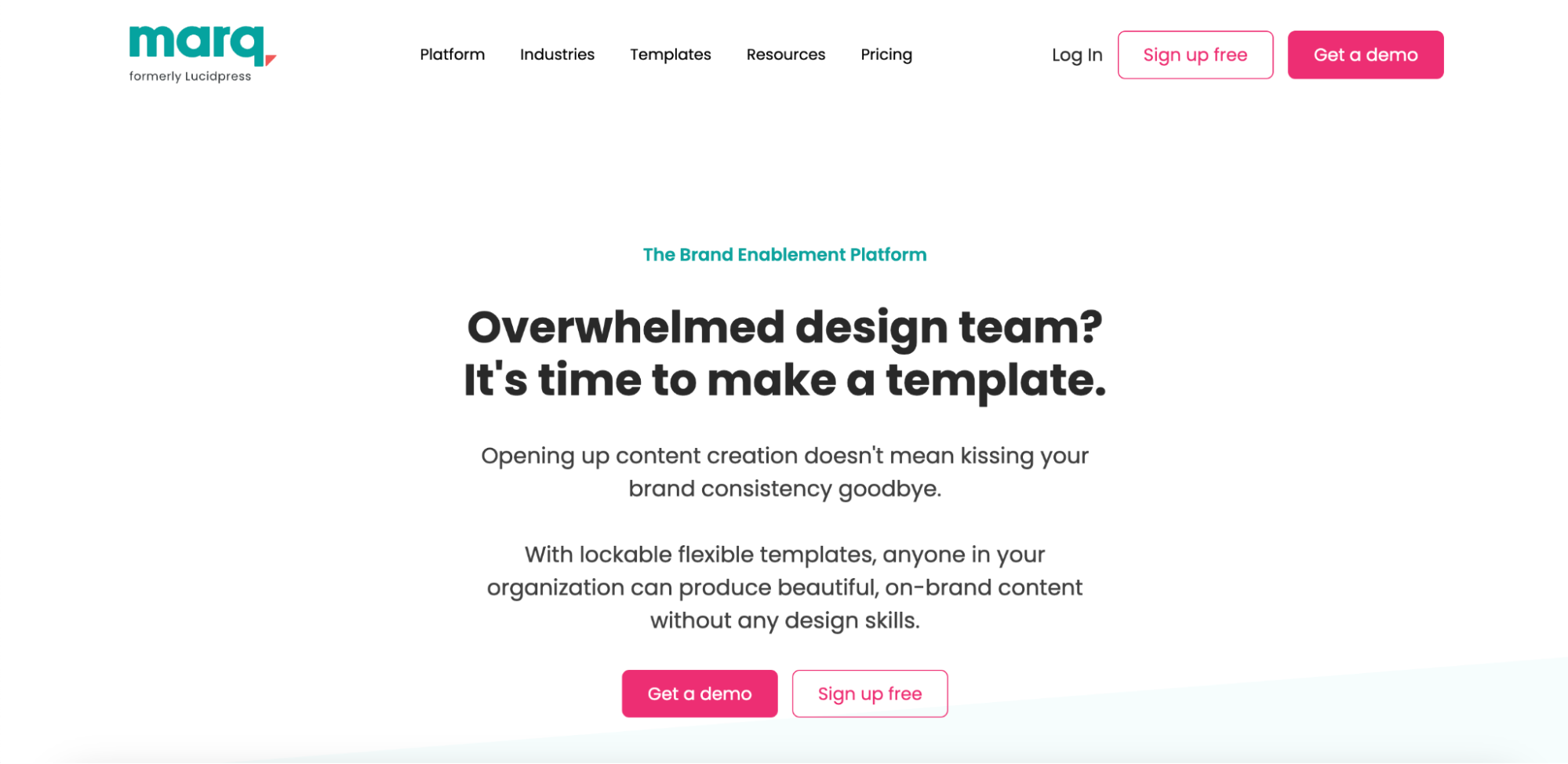
The second place on our best ebook maker list goes to Marq. Marq calls itself a digital content platform, providing everything from document creation to distribution to automation.
This ebook creation software is a good fit if you need to create hundreds of ebooks and other documents from scratch and automate the process as much as possible. This interactive ebook tool boasts a wide selection of design templates and a comfortable drag-and-drop editor. So even if you aren’t a designer, you will find it convenient to work on the content of your ebook both text- and image-wise.
This ebook software also provides collaboration tools so you can work on your ebooks as a team. And thanks to integration with InDesign as well as MSL and DAM tools, it is easy to manage time-sensitive and custom content.
Key features:
- Templates for all your brand assets;
- Personalized content access with special permissions to teams and individuals;
- Direct publishing to social media and comfortable content embedding;
- Automate content creation with custom data pulled from CSV, Google Sheets, XML, or MLS;
- Content analytics: see how your team uses the content and which content gets more attention.

- Great for large organizations with the need to produce large numbers of ebooks and other custom business content.
- Out-of-the-box integrations with document creation and management tools for streamlined business processes.
- A broad selection of ready templates for different use cases.
- Versatile tools for working with ebooks and other content from the first draft till the finished product.

- Isn’t a good fit for small to medium companies not looking to use the platform to the max.
- All the key features are locked behind a paywall, although the company offers a free plan.
- Setting up the software takes a lot of time and may feel a bit confusing.
Price: Starts free (3 documents 3 pages each); paid plans start from $10/user per month.
#3 Designrr
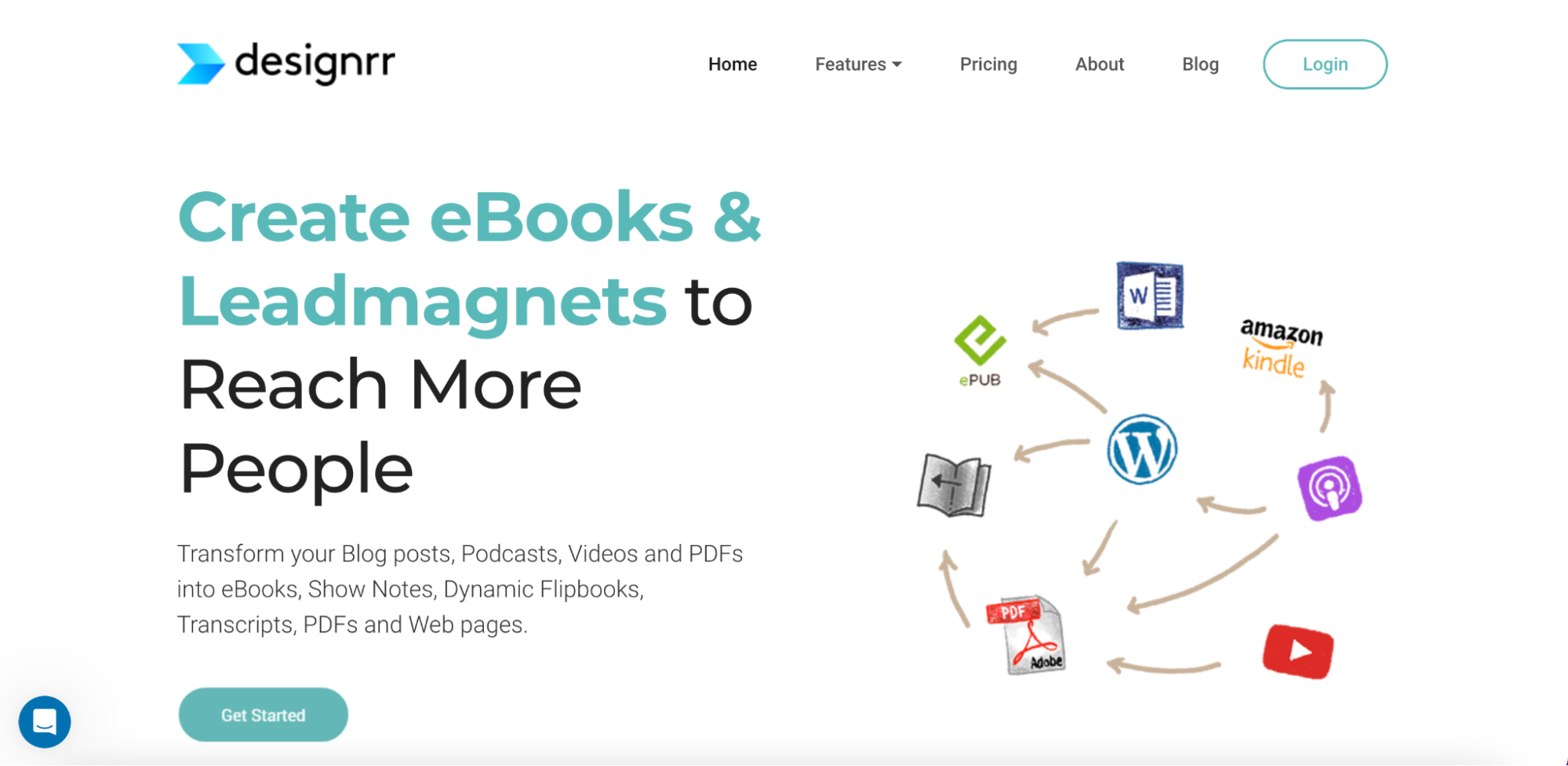
Designrr is great ebook software for content marketers and content creators looking to get the maximum out of the content they produce. It takes practically any content in the form of a webpage, Google Doc, or any other editor and converts it into an ebook ready for publishing. This way you can save time and money on developing content from scratch by repacking existing assets. In addition to that, Designrr offers a variety of neat templates you can use to publish your content even faster.
Key features:
- Ebook and flipbook creation from a variety of sources, including website pages, PDF, text documents, audio and video YouTube files;
- Customization with ready templates;
- Table of contents generation.

- Easy-to-use tool for non-designers.
- Speeds up content production which is crucial for small companies and individual creators.
- Works with multiple input sources.
- The cheapest plan provides all key features—quite affordable.

- Ebook editing is somewhat clunky and has a steep learning curve.
- Flipbook quality is subpar.
- No built-in analytics.
Pricing: Free 7-day trial; paid plans start from $29/user per month.
For Writers
Ebook creation software for writers must not only be helpful in terms of authoring and editing tools, but also provide for a smooth transition to major distribution channels such as Amazon, iBooks, or Barnes & Noble.
#4 Chapterly

Chapterly is our top pick, as this online ebook creator app does all of the things described above.
As an author, you can work on your text there, format it to your liking, and collaborate with your editors in real time. Everything gets backed up in the cloud, so you can always be sure your work is kept safe and sound. You can also work offline and from mobile, helping you meet your writing goals and deadlines wherever you are.
Once you are finished, you can convert your ebook into EPUB, Kindle, or any other format of your choice, and proceed to publish it with major retailers.
Key features:
- Text editor with a spellchecker, distraction-free mode, and goals;
- Multiple access levels and roles for collaborating with editors;
- Cover design: paperback and hardcover, access to royalty-free image library;
- AI writing assistant;
- Publish as EPUB, Kindle, or PDF.

- Stylish and user-friendly tool for text-based content creation.
- Everything is kept in one place in a well-organized and helpful manner.
- Delivers print-ready product, including output in PDF, Kindle, or EPUB.
- Offers straightforward pricing with just one paid plan which includes everything.

- Design options are a bit limited.
Price: Free for 14 days; paid plans start from $15 per month.
#5 Vellum
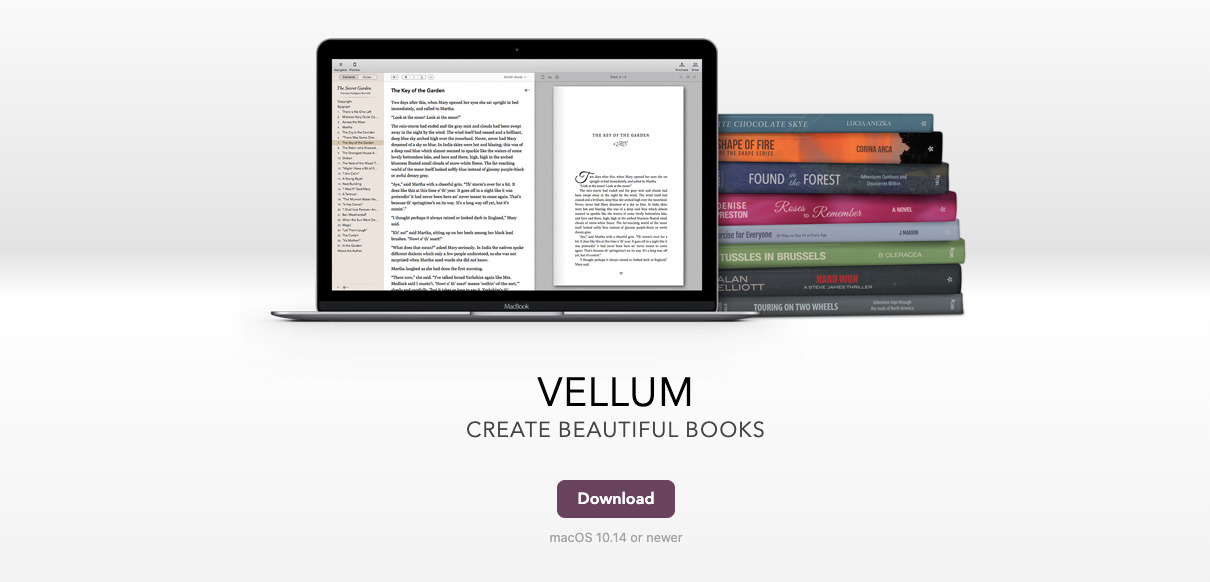
Vellum may be on the higher end of the price range than other ebook software solutions of the kind, but it pays off in producing exquisite, text-centric books. If you want to create a stunning ebook for Amazon, Apple, or Kobo, while also making it ready for print, Vellum is the best software for creating ebooks.
Key features:
- Powerful text editor;
- Rich formatting and styling options;
- Multiple output formats supported.

- Provides excellent visual options and top-notch quality.
- Has everything you need to create an ebook or a printed book from scratch.

- Only supports MacOS.
Price: One-time fee starting from $199 for a license.
#6 Scrivener

Much like Chapterly and Vellum, Scrivener ebook creator software focuses on providing helpful authoring tools—text editing, styling, and exporting in a variety of formats. On top of that, it makes planning out your project and organizing all additional resources and content easier than ever.
Scrivener is available in the form of a desktop app for Windows, Mac OS, and iOS which means you can work on your ebook the way you prefer. Unfortunately, the apps aren’t cross-compatible out of the box, but you can transfer your project file via Dropbox or iTunes so that still works.
Key features:
- Text editor;
- Formatting and styles accommodating different content types;
- Planning tools: corkboard, folders, and subfolders for extra materials;
- Progress tracking;
- Print-ready outputs.

- Powerful ebook creator software for authors working in any genre from fiction to scripts to non-fiction.
- Great for big projects requiring lots of research and careful planning.
- A desktop app that can be used offline.

- The software isn’t very intuitive and takes a steep learning curve before you can utilize all its features.
- Doesn’t provide any cover design features.
Pricing: One-time fee of $69.99 for a desktop app license.
For Students and Educators
While PowerPoint presentations are still an option, students don’t have to confine themselves to them anymore. With so many good ebook generators on the market, creative assignments can be a real pleasure for students as well as for teachers.
#7 Book Creator
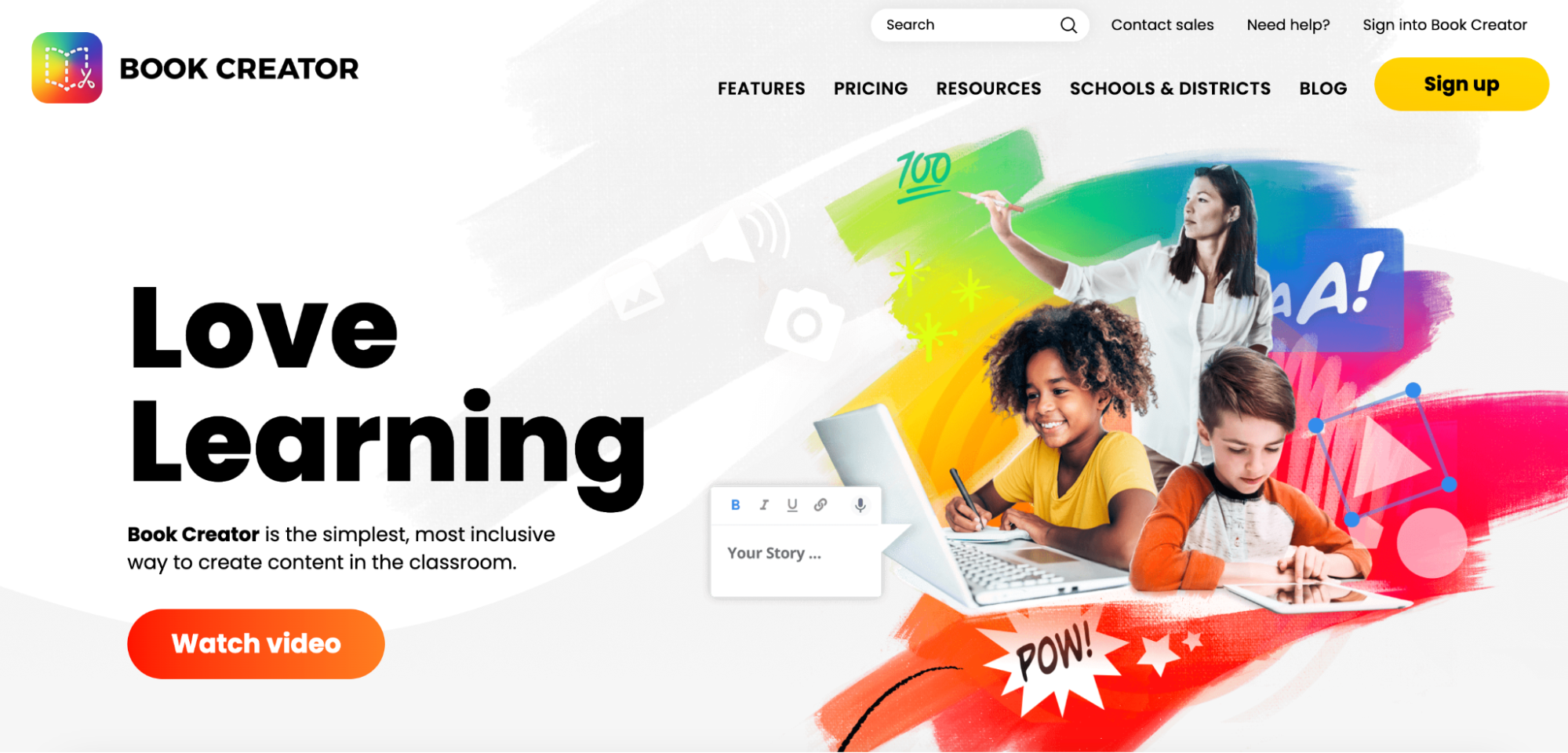
Specifically tailored for education, Book Creator is a great fit for classrooms. It’s an online ebook maker app that allows students to create their own interactive ebooks, be they research journals, science reports, poetry books, or even comic adventures.
Working on an ebook is really easy, and content can be made interactive with videos, images, and audio tracks. It’s a great way to bring creativity and fun into the classroom, promote collaboration, and boost writing and design skills.
On the other hand, Book Creator offers great management tools for educators. As a teacher, you can create a class library that makes it comfortable to store, organize, and share all the ebooks your students create.
With remote learning marching in, Book Creator can be just what you need to stay connected with your students and encourage them to create beautiful ebooks.
Key features:
- Powerful design options: 50 fonts, shapes, image collection;
- Interactivity: video, audio, and voice recording;
- Real-time student-teacher collaboration across multiple devices;
- Variety of templates to choose from;
- Seamless integration with AutoDraw to enrich any project with great illustrations;
- Sharing via a link, as an ebook, or a print copy.

- Provides amazing creation freedom for fun and engaging student projects.
- Easy to manage content as an educator.
- Works right in a browser—no need to download anything.

- May be a bit overwhelming for younger students due to all the available features.
Price: Starts free for individual users; paid plans start from $12 per teacher per month.
#8 Pressbooks
Pressbook is an ebook creation solution for colleges and universities. Unlike Book Creator, it focuses on educators rather than students.
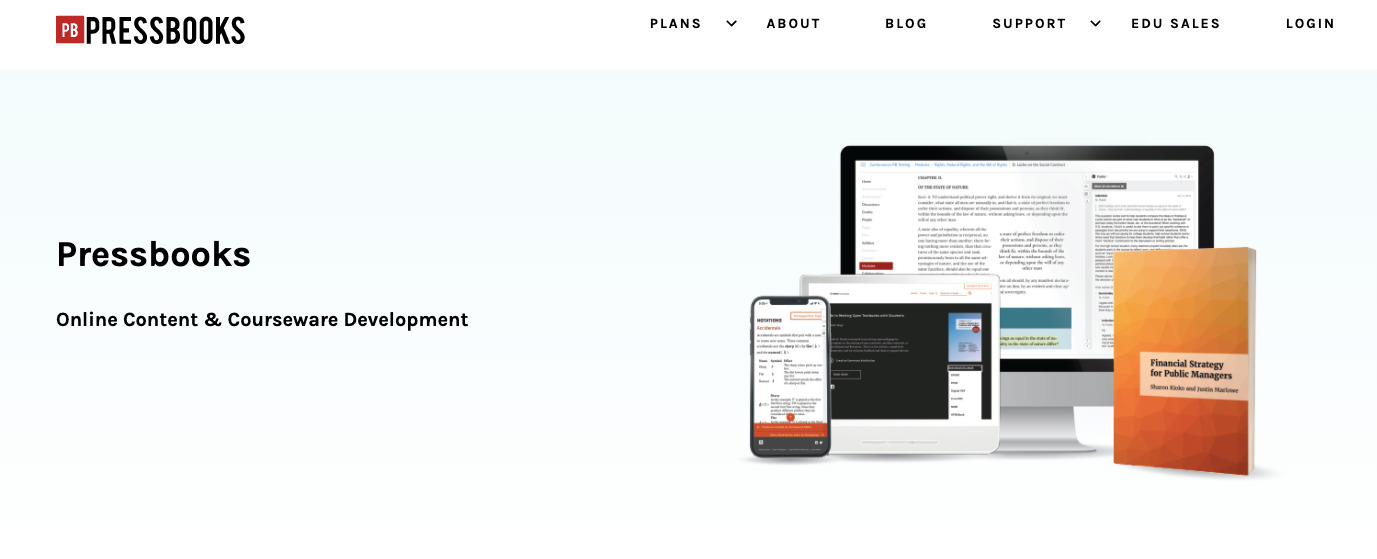
It offers authoring and content editing tools, but its main strengths are a variety of end formats (EPUB, Kindle, or open formats such as HTML5) and integration with LMS systems.
As an educator, you can create an ebook library with all the materials your students need. It may be a challenging task, but it’s definitely one worth taking. Having all the necessary materials on hand boosts the chances of your students’ success in distant learning environments. So if your main goal is setting up a comfortable ebook distribution system, Pressbooks may be just the tool to help you achieve it.
Key features:
- Content creation;
- Interactive learning activities such as quizzes;
- Multimedia embedding;
- Accessible math notation;
- Book template library;
- Export in 10+ formats.

- Quick to set up and user-friendly despite being packed with various features.
- Catering to everyone starting with self-publishers to enterprises.
- Focusing on accessibility.
- Works well with any educational ecosystem.

- The books themselves look much like common PDFs—not great for graphic-based content.
- Content navigation is a bit confusing.
Pricing: Free for 7 days; paid plans start from $12 per month for a self-publisher.
#9 Kitaboo
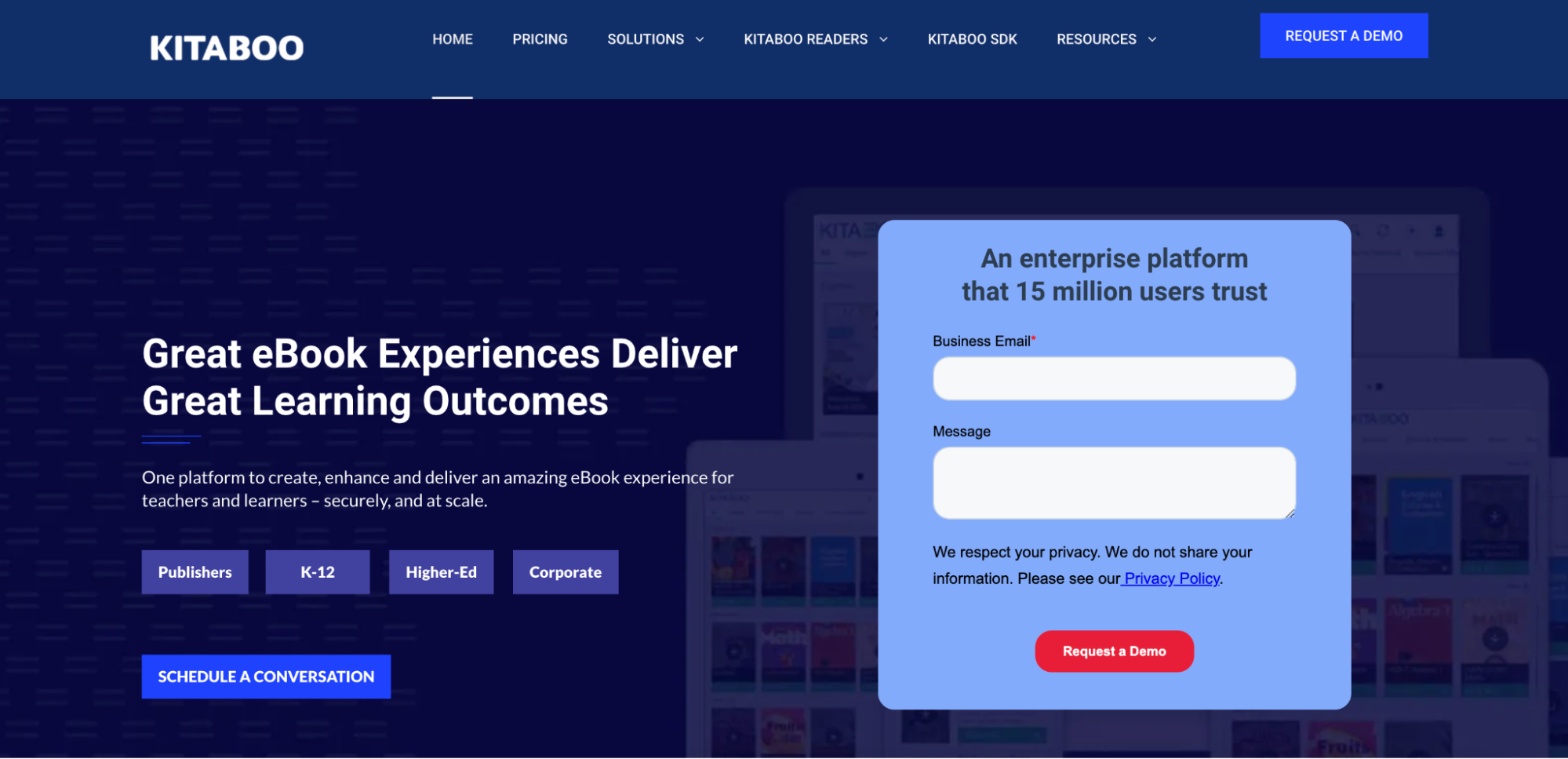
Kitaboo is a digital content platform specifically designed for teachers and learners at all levels—from K-12 to publishers. It goes beyond ebook creation and provides a suite of solutions for different use cases and industries.
However, no matter the case, at its core this software for ebooks lets you create digital content, makes it interactive, and delivers it to your users via a dedicated reader app. On one hand, it’s a great way to share your ebooks—they become DRM-protected and available across multiple devices. On the other, it means you are tied to Kitaboo solution and cannot publish your work via different channels.
Key features:
- Ebook creation tools;
- DRM protection & encryption;
- Integration with various LMS;
- Ebook analytics.

- Fully covers content creation and distribution.
- Offers content monetization via an e-commerce platform.
- Brands and protects your ebooks—you can even brand the e-store and request a branded mobile app.

- Usability: users complain that it’s sometimes glitchy.
- Difficult to set up.
Pricing: by request.
So there you have it. We hope that with this list of the best interactive ebook software, you will easily be able to create and share your ebooks with your audience. Good luck!





